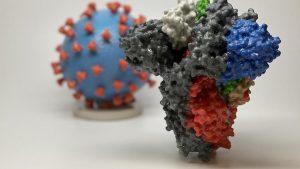
[Reprinted: Lancet Infectious Diseases, 9-1-2020]
Weeks and months after the onset of acute COVID-19, people continue to suffer. Paul Garner, a professor of epidemiology at Liverpool School of Tropical Medicine, UK, wrote on the 95th day after the onset of symptoms that “I am unable to be out of bed for more than three hours at a stretch, my arms and legs are permanently fizzing as if injected with Szechuan peppercorns, I have ringing in the ears, intermittent brain fog, palpitations, and dramatic mood swings.” Other people also describe similar complaints. 78 of 100 patients in an observational cohort study who had recovered from COVID-19 had abnormal findings on cardiovascular MRI (median of 71 days after diagnosis) and 36 of those reported dyspnoea (i.e difficult or labored breathing). and unusual fatigue.
We are seeing patients in clinics dedicated to COVID-19 convalescents, and for some of these patients the return to their former health trajectory is slow and painful. These patients are not only those recovering from the severe form of the acute disease (i.e, post intensive care syndrome), but also those who had mild and moderate disease.
Rare long-term sequelae can result after other viral infections—e.g, infectious mononucleosis, measles, and hepatitis B. Long-term sequelae of COVID-19 are unknown (as are many aspects of the acute disease). Long-term consequences were observed in survivors of severe acute respiratory syndrome (SARS) but it is unknown whether lessons from SARS are applicable to COVID-19. Other concerns are rising: does acute COVID-19 cause diabetes? Or other metabolic disorders? Will patients develop interstitial lung disease? We are still in the first months of the pandemic and we do not know what to tell our patients when they are asking about the course and prognosis of their ongoing complaints.
The number of people affected by COVID-19 is unprecedented. We owe good answers on the long-term consequences of the disease to our patients and health-care providers. The obvious answer is in research. For efficient research and for research that our patients (and we) can trust, some common problems in the description and research of acute COVID-19 should be avoided. The main problem is fragmentation. For example, Wynants and colleagues described 47 models for predicting COVID-19 infection and 16 prognostic models for COVID-19 patients. Most of these models had a high risk of bias and most of them did not have external validation. Additionally, randomised controlled trials on interventions to treat the acute disease were stopped before enlisting the planned sample size. Although much effort was invested in these studies, we have learned little. Fragmentation also happens by discipline and the follow-up (for clinical and research purposes) should be multinational, multidisciplinary, comprehensive, and homogenous.
Careful recording of symptoms and patient examination should allow understanding of which part of the sequelae is common to all severe infections, which symptoms might be explained by the anxiety caused by a new disease and by the isolation, and which symptoms are secondary to a complicated form of COVID-19 (e.g, pulmonary involvement during the acute disease). If indeed COVID-19 is causing long-term sequelae then are the mechanisms underlying the long-term consequences immunological? Or caused by new or relapsing inflammation, ongoing infection, or side-effects of immunomodulatory treatment? Such data can serve to point at candidate management strategies to be tested in trials.
Support for research is needed on the trajectory of people recovering from COVID-19. To avoid the problems we have witnessed in the research of the acute phase of the disease, a clear definition of patient inclusion criteria, a common protocol, and uniform definitions of outcomes and ways to measure them are required. Additionally, data should be collected in real time and computational tools are needed to be able to do this.
The participation of an international and interdisciplinary group of researchers is essential. Multisite and multinational projects are needed because a description from one group or one site cannot discern between universal features and features of the local health system or the local population. By comparing data from different sites and countries we can learn which characteristics of the disease are universal and which are local. In addition to improving the care of our patients with long-term consequences of COVID-19, we hope to be able to join such necessary research efforts soon.